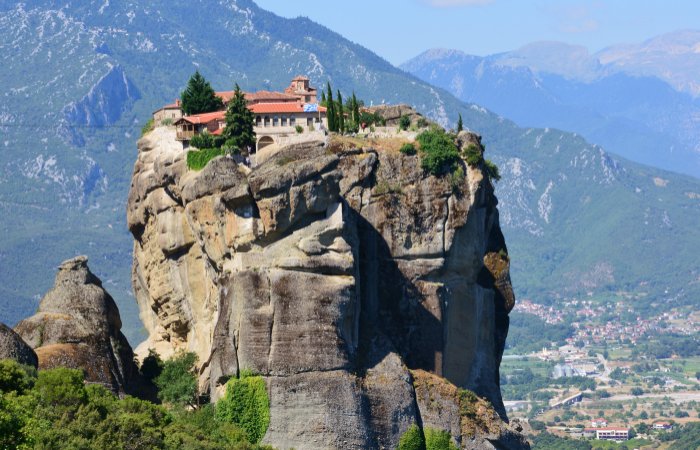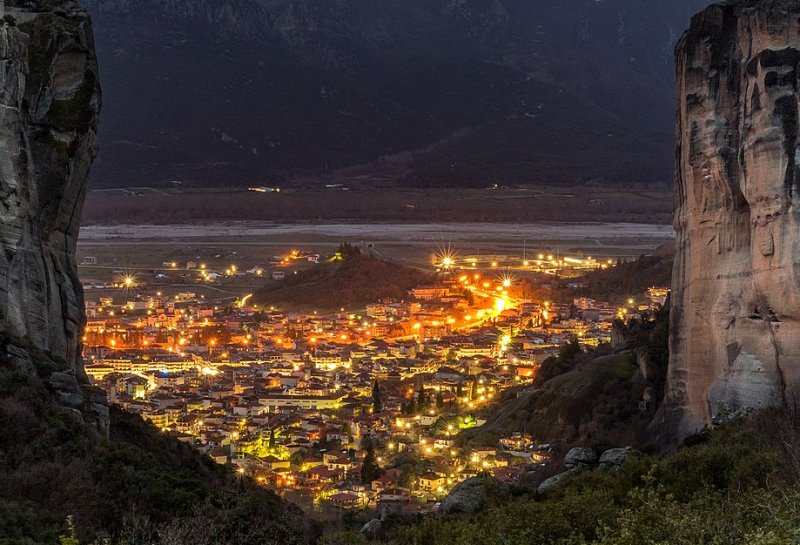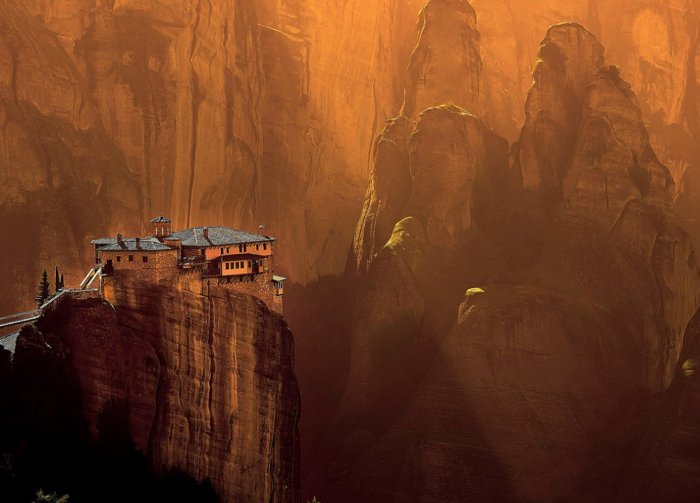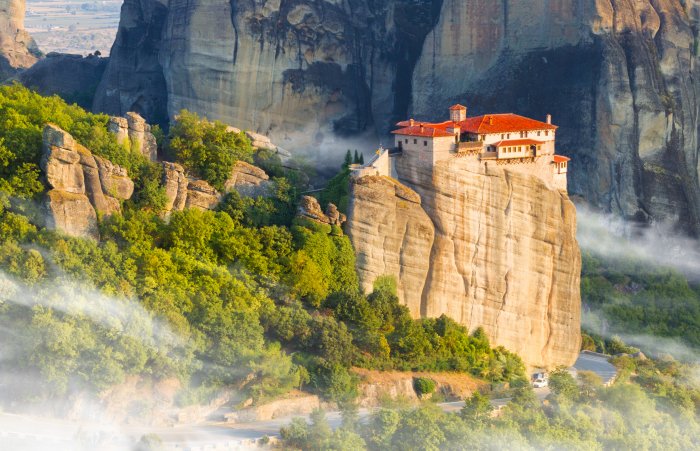A. Sutherland – AncientPages.com – Meteora, (means in Greek:” raised from the ground, hanging”) and the ancient monasteries built atop the Meteora mᴀssif represent a magnificent place that does seem to hang in the sky.

Meteora in Greece. Credit: Adobe Stock – Romy
The Meteora mᴀssif, located on the northwest edge of the Thessaly Plain near the Pindus Mountains in central Greece, is a sandstone rock formation rising over 600 meters above sea level. The rock owes its unique appearance to beautiful and strange rock pillars and columns of different shapes.
The process that created the Meteora outcroppings is not precisely explained. Still, it is known that about 60 million years ago, a series of earth movements pushed the seabed upward, forming a high plateau.
The colossal rock pillars emerged in the thick sandstone layer under the weathering processes.
Several hundred years ago, ancient human hands built Greek monasteries on their tops. The monasteries became “meeting places of God with man. Only 6 of the 24 buildings have been preserved in a condition that allows living and visiting.
The monasteries (today, only six) are all in Meteora and date back to the 14th, 15th, and 16th centuries. For nearly a thousand years, spiritual seekers and others isolated from others and self-disciplined individuals have climbed atop the mᴀssive high platforms of stone that rise to the clouds.

Meteora by night. Image credit: – CC BY-SA 4.0
Until today, these people seek the Meteora’s high places to link their lives to the divine. It’s a sanctuary of harmony and quietness that we can contemplate in the region of Thessaly mentioned in Homer’s Odyssey.
The weather conditions often permit us to experience something extraordinary up there, especially when clouds fill the valley of the Pineios River below. The tips of the mountains seem to float on top of the fog like ships in a harbor.
Around Meteora People Probably Lived 50,000 Years Ago
Humans moved around the Meteora mᴀssif probably 50,000 years ago, and caves in its vicinity were inhabited uninterruptedly between 50,000 and 5,000 years ago.

The Monastery of Rousanou (in order from background to foreground). The Holy Spirit Rock is on the left side, while Dupiani Rock can be seen in the center, at the middle of the valley. Image source
One of the caves is known as the cave of Theopetra, inhabited by humans 130,000 years ago. It was constructed 23,000 years ago to protect against extreme winds when the planet Earth was experiencing an ice age, and the caves were good shelters. There is also the oldest known example of a built structure at this site – a stone wall that blocked two-thirds of the entrance to the Theopetra cave.
Building the first Orthodox monasteries dates to the 14th century, but persons who lived in seclusion (the Hermits) had already earlier inhabited the caves of Meteora at the end of the 11th century.
For several hundred years, access to monasteries was limited. Until the 1920s, the only way up to the monastery was to use special nets and baskets suspended on ropes for transporting people, food, and materials necessary to construct and repair monasteries.
It took time until steps were built into the rock.
Monks’ Life In Meteora Monasteries

Meteora in Greece. Credit: Adobe Stock – Romy
The monks living in the monasteries experienced a period of splendor in the 16th century when Suleiman I (1494 -1566) (known as Suleiman the Magnificent) ruled the Ottoman Empire. Having learned about the monasteries on the high rocks of Meteora, the sultan ordered to deposit of most of the riches looted during the wars. So, the monks lived in ‘the Sultan’s Treasury’ and significantly improved their living conditions, and apparently, they did not oppose the occupation.
The largest monastery of Meteora is ‘Megalo Meteor, which is located at a height of 534 meters above sea level) and was constructed in the 14th century
Today, it is reached by one-hundred-fifteen stone steps.
Like other Meteora monasteries, the ‘Megalo Meteoro’ was also devastated during the Second World War and the German bombing. Recently, the landmark was renovated, and the structure is now added to the historical museum located in the sanctuary’s interior. Inside is a monastic Ossuary (or the so-called skull chapel), which contains the bones of all monks living in monasteries.
Written by – A. Sutherland – AncientPages.com Senior Staff Writer
Updated on October 20, 2022
Copyright © AncientPages.com All rights reserved. This material may not be published, broadcast, rewritten or redistributed in whole or part without the express written permission of AncientPages.com





